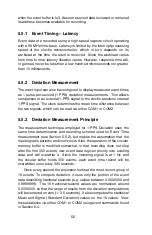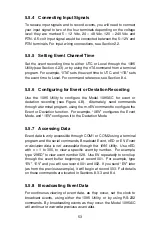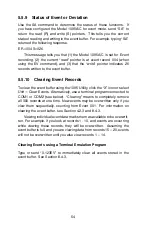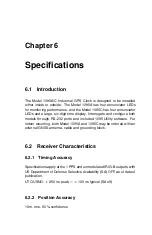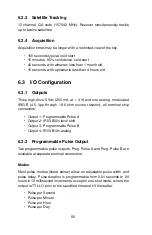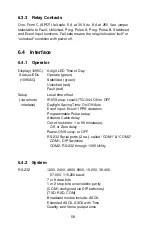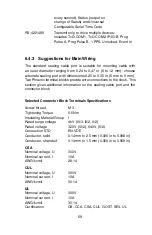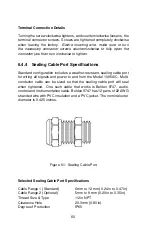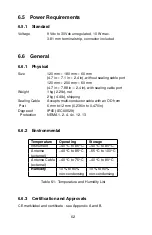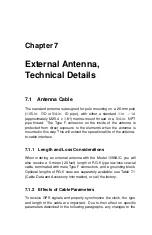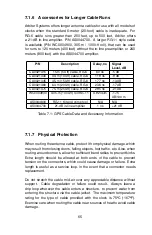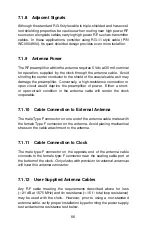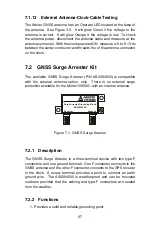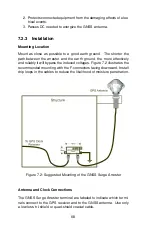
5.5.4
Connecting Input Signals
To receive input signals and to record events, you will need to connect
your input signal to two of the four terminals depending on the voltage
level; they are marked 5 – 12 Vdc, 24 – 48 Vdc, 120 – 240 Vdc and
RTN. A 5-volt input signal would be connected between the 5–12V and
RTN terminals. For input wiring connections, see Section 2.2.
5.5.5
Setting Event Channel Time
Set the event recording time to either UTC or Local through the 1095
Utility (see Section 4.2.3), or by using the nTA command from a terminal
program. For example, “0TA" sets the event time to UTC, and “1TA" sets
the event time to Local. For command reference, see Section 8.4.
5.5.6
Configuring for Event or Deviation Recording
Use the 1095 Utility to configure the Model 1095A/C for event or
deviation recording (see Figure 4.8).
Alternately, send commands
through a terminal program, using the m,nEV command to configure the
Event or Deviation function. For example, “0EV" configures the Event
Mode, and “1EV" configures it to the Deviation Mode.
5.5.7
Accessing Data
Event data is
only
accessible through COM1 or COM2 using a terminal
program and the serial commands, Broadcast Event, nED or EV.
Event
or deviation data is not accessible through the 1095 Utility
. Use nED,
with n = 1 to 300, to view a specific event by number. For example,
type “29ED" to view event number 029. Use EV repeatedly to scroll up
through the event buffer beginning at record 001. For example, type
“EV", “EV" and you will see record 001 and 002. If you send “EV" later
(as from the previous example), it will begin at record 003. Full details
on these commands are located in Sections 8.3.3 and 8.4.
5.5.8
Broadcasting Event Data
For continuous viewing of event data, as they occur, set the clock to
broadcast events, using either the 1095 Utility, or by using RS-232
commands. By broadcasting events as they occur, the Model 1095A/C
will
continue to overwrite previous event data
.
53














